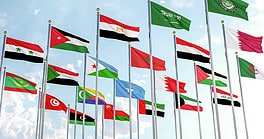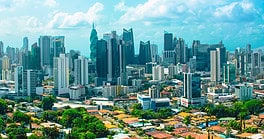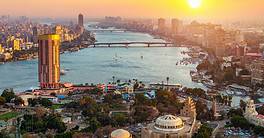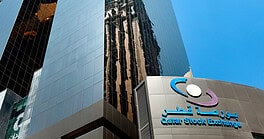Kazakhstan’s evolution to a market economy hinges on diversifying away from oil and gas, with a lift from FDI. Covid complicates that scenario.
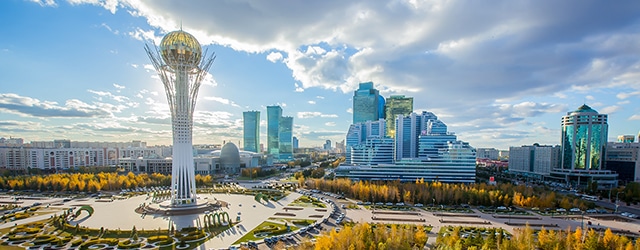
|
VITAL STATISTICS |
|---|
|
Location: Central Asia |
|
Neighbors: Russia, China, Kyrgyzstan, Uzbekistan, Turkmenistan |
|
Capital city: Nur-Sultan (renamed from Astana in 2019) |
|
Population (2020): 18,820,514 |
|
Official language: Kazakh. However, English is the official language of the Astana International Financial Centre |
|
GDP per capita (2019): $9,731.10 |
|
GDP growth (2019): 4.5% |
|
Inflation (2019): 5.2% |
|
Currency: Tenge |
|
Investment promotion agency: Kazakh Invest |
|
Investment incentives available? Depending on the project, tax breaks and customs duty exemptions, subsidies; 24 industrial zones and 13 special economic zones; under some circumstances, incentives can include prebuilt infrastructure, coinvestment, guarantee schemes or innovation grants. Priority sectors include agriculture, metallurgy, extraction of metallic ore, chemical and petrochemical industry, oil processing, food production, machine manufacturing, and renewable energy. |
|
Ease of Doing Business rank (2019): 25 |
|
Corruption Perceptions Index rank (2019): 113 |
|
Political risks: Threat of terrorism; possibility of government legislation giving preferences to domestic companies, and of government intervention in foreign companies’ operations |
|
Security risks: : Labor unrest, attacks on foreign workers; violent crime against tourists; robberies in public places; criminals posing as “meet and greet” airport facilitators; spiked food and drinks; demonstrations can turn violent and cause traffic and transportation disruptions |
|
PROS |
|---|
|
Skilled and abundant workforce |
|
Low unemployment rate |
|
CONS |
|---|
|
Intellectual property poorly protected |
|
Aggressive driving, poorly lit and maintained roads make driving dangerous |
|
Sources: Asian Development Bank, The Astana Times, Belt & Road News, Government of Canada Global Travel Advisory, International Monetary Fund, Kazinform, Reuters, Transparency International, United Nations Conference on Trade and Development, US State Department, World Bank, World Population Review, Yale University. |
|
For more information, check out Global Finance‘s Kazakhstan Economic Report data page. |
Kazakhstan occupies a position halfway between two systems, says Yerlik Karazhan, an independent economic analyst in Nur-Sultan, the nation’s capital. No longer a Soviet-style command economy, “We’re definitely going to a market economy,” he says. “We are working hard on that.”
Each of Central Asia’s “-stans” evolved differently after the collapse of the Soviet Union. “We’re very much tied to the [Russian] economy,” says Karazhan, noting that Russian doctors helped in Kazakhstan during the pandemic. “We still have big government in the economy,” and small and midsize businesses account for only a small share, he adds. Kazakhstan could become a focal point as Russia and China contend for regional dominance. However, its landlocked location makes it dependent on Russia to ship its oil to Europe.
The government sees other changes as necessary to expand economically, including shifting away from reliance on oil and gas revenues. That in turn would require a change in foreign direct investment (FDI) priorities, says Baurzhan Sartbayev, chairman of Kazakh Invest, the country’s investment promotion agency. Hydrocarbon revenues suffered a double hit from falling prices and a huge drop in demand due to Covid-19, according to the World Bank.The country nevertheless has opportunities to break away from its oil and gas dependency.
“Kazakhstan has a strategic direction for diversification of the economy toward downstream processing industries,” says Sartbayev. Targets include agribusiness, mechanical engineering and petrochemicals, which could promote technology and skills transfer along with job creation and fund inflows.
In his first state-of-the nation address after assuming office last year, President Kassym-Jomart Tokayev said his first priority would be “abandonment of the raw material-based mentality, and diversification of the economy.” An increase in FDI inflows looms large among the country’s development goals.
“According to the national strategies, the goal is to bring 50% more FDI into the processing sectors,” says Sartbayev, FDI inflows in the first quarter of this year totaled $2.5 billion or approximately 8% of GDP, according to the World Bank. Current FDI-backed initiatives include 172 projects worth $46.5 billion in various stages of implementation, from negotiation to construction.
As part of its drive for FDI, and to stake a claim as a regional financial hub, Kazakhstan in 2018 opened the Astana International Financial Centre. Attracting more foreign capital won’t be easy, however. Kazakhstan’s competitors include other major natural resources exporters, among them Australia, Canada and some South American countries.
Adding to the difficulties, the United Nations Conference on Trade and Development (Unctad) predicts the total volume of global FDI will decrease by up to 40% in 2020 and a further 5%-10% in 2021, due to the pandemic. Lockdowns have slowed existing investment projects, according to Unctad, which foresees the prospect of a deep recession may lead some multinationals to reassess new projects.
